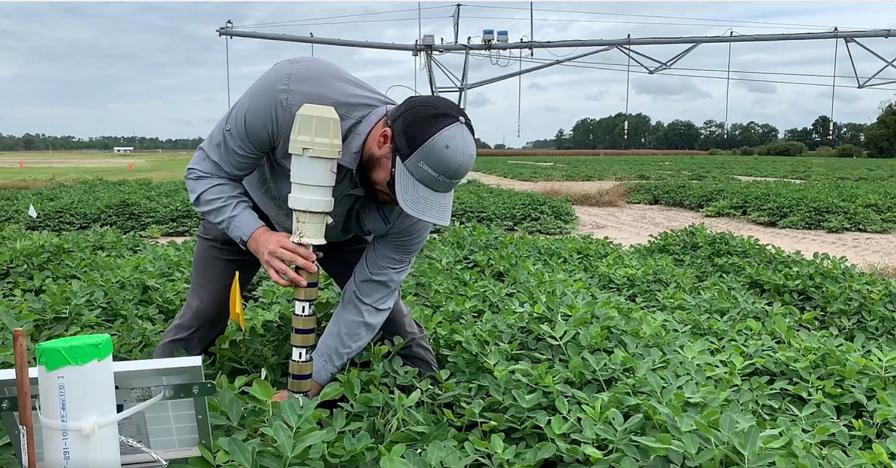Being a Water Watcher Comes Natural for This Florida Grower

The use of soil moisture probes is one method that helps keep Brooks Garland of Lee Peanut abreast of his plants’ needs without overwatering.
Photo courtesy of UF/IFAS
Water has always been a precious resource, but it’s becoming more of a premium every day. Nowhere is that more apparent than right here in the Sunshine State. With more than 21 million residents and nearly 1,000 folks moving here each day, the pressure is on to say the least. Unfortunately, many see agriculture as the bad guy behind recurring water quality problems.
On the contrary, you’d be hard-pressed to find better stewards of the land than farmers. Some stand out from the rest. One is Brooks Garland, Farm Manager of Lee Peanut in Madison County. The 11,000-acre, multicrop operation is located smack dab in Florida Department of Environmental Protection’s Suwannee River Basin Management Action Plan (BMAP), which is requiring more than a 4-billion-pound nitrogen reduction. Ag in the area is responsible for 80% of this reduction in maximum loads — a tall order.
Through a collaborative effort and fueled by a passion for the land, the multigenerational farm has adjusted production and improved its best management practices, says David Royal, Florida Nutrient Stewardship Project Manager for The Nature Conservancy. Lee Peanut is now accounting for at least 7% of this total required reduction and still growing.
Here are a few examples of how Garland and his team are doing it:
- Practices start with soil samples in which they have developed a grid so they can see year-to-year changes. From those, decisions can be made on fertilizer needs and rate for that crop season. Once the plant emerges, weekly leaf tissue samples are taken to make any adjustments to the next nutrient application.
- In addition, Lee Peanut has started to side dress the first two nutrient applications. The first year, they drilled it in off the plant. This past year, they added 360 Y-drops so fertilizer can be placed right at the base of the plant. With this change, the operation has reduced its nitrogen by 50 pounds per acre. With this kind of success, they are looking to side dress more than just the first two applications in the future.
- Another useful tool has been soil moisture sensor probes. The devices are checked each morning to make daily decisions. On Garland’s corn crop this year, more than 200 million gallons of water was saved. The pH of the farm’s irrigation water also is monitored so it doesn’t impede nutrient uptake.
- Lee Peanut plants cover crops following harvest to absorb excess nutrients and to add organic matter to the soil. Different mixes of cover crops are being reviewed across the entire farm as additional benefits to soil health have been noted.
- Wells operate on all electricity, lowering the farm’s carbon footprint.
- Garland has been working the past few years with several fertilizer companies on controlled-release trials. Benefits of controlled-release fertilizers include fewer trips through the field and delivering more accurate doses of product to suit plants’ needs.
For these reasons and more, Lee Peanut is helping lead the way in not only better ways to farm, but also protecting Florida waters. Garland’s efforts also have earned him a recent nomination for the 4R Advocate Award 2022.
To learn more about how to become a 4R advocate, visit nutrientstewardship.org.








